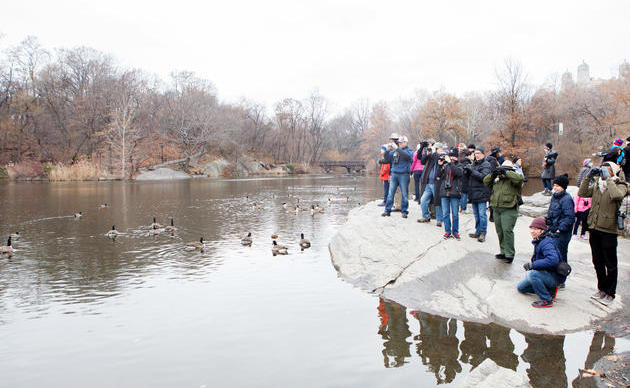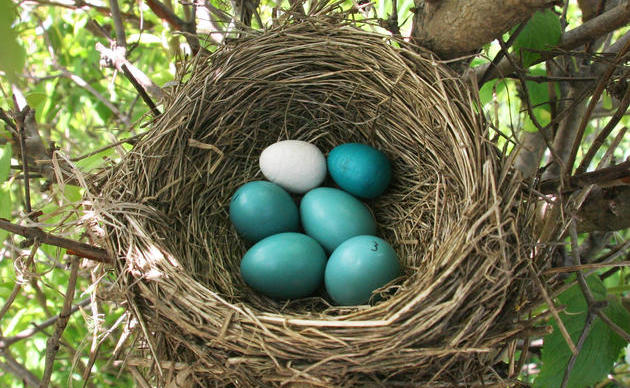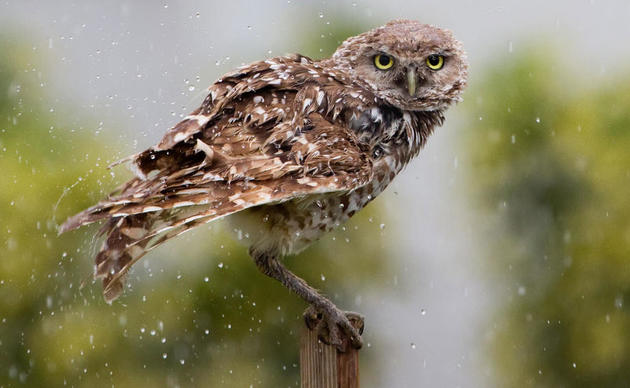Good Books (and booklets!)
AUDUBON Resources
Audubon Pocket Backyard Birdwatch, 2008, Kress S., DK Publishing. This is a great little book that covers creating bird habitat, bird biology and behavior, and includes a fold-out poster of common birds (national). Keep it on your windowsill, in your car, or your desk!
The Audubon Society Guide to Attracting Birds: Creating Natural Habitats for Properties Large and Small, Second Edition, 2006, Kress, Stephen W., Cornell University Press. In a book long awaited by landscapers, birders, gardeners, and naturalists, Stephen W. Kress provides a practical, comprehensive, and thoroughly illustrated guide to attracting birds to any property, be it a small patch of land in the city or a showplace countryside garden, a median strip or an expansive woodlot, a commercial building or a community park.
North American Bird Feeder, 2005, Burton, R. and Kress, Stephen W., SK Publishing. The complete guide to attracting and observing garden birds. Includes recipes to attract specific common species.
The Audubon Backyard Birdwatcher: Birdfeeders and Bird Gardens, 1999, Burton, Robert and Kress, Stephen W., SK Publishing. The definitive guide to attracting birds includes plant profiles (across five regions of U.S.), bird diets, and planting recommendations.
Audubon Guide to Gardening for Life in Southeastern Pennsylvania, 2005, National Audubon Society/Bucks County Audubon Society: Alternating chapters on how-to’s and model “success stories” that address problems specific to the mid-Atlantic region including runoff management, naturalizing detention basins, deer, home and corporate habitat gardens.
Audubon Protecting Animals Through Habitat (APATH): Native Plants in the Creation of Backyard, Schoolyard and Park Habitat Areas. 1997 Audubon Council of Pennsylvania/PA Wild Resources Conservation Fund. A how-to booklet full of reader-friendly information and species lists (plants, birds, etc.).
OTHER Publications
Backyard Ecology
Bringing Nature Home: How Native Plants Sustain Wildlife in our Gardens, 2007, Talamy, D., soandso: In simple terms, this book connects the dots and makes it clear that increasing native insect biomass with native plants is the glue that holds together the web of life in the homemade habitat. Available at most book retail sources.
Noah’s Garden: Restoring the Ecology of our Own Backyards, 1993, Stein, S., Houghton Mifflin: A beautifully written examination of why restoring habitat on our properties is so important and how it can replace traditional landscaping practices which create a disconnect. If nothing else, read the first 100 pages and you will have a new perspective on your yard. Available on retail book websites, some retail book locations, and at some nature centers.
Planting Noah’s Garden: Further Adventures in Backyard Ecology, 1997, Stein, S, Houghton Mifflin: The follow-up to Noah’s Garden, the how-to’s on welcoming life back into the yard. Available on retail book websites, some retail book locations, and at some nature centers.
Backyard Conservation: Bringing Conservation From the Countryside to Your Backyard, Revised 2007, USDA-NRCS. A nice booklet offering an overview of conservation gardening principles, published in the association with Audubon At Home. Available as a download or order here.
Land Management
More Wildlife on Your Land: A Guide for Private Landowners, 2002, Payne, Neil F., Barberie Publications. This handy book is full of great information geared to landowners with large acreage and/or working land (agricultural or ranch) who would like to provide for and protect wildlife. Available here: http://www.jstor.org
The Woods in Your Backyard: Learning to Create and Enhance Natural Areas Around Your Home, 2006, Kays, J., Drohan, J, Downing, A, and Finley, J. A, A publication of the Natural Resource, Agriculture, and Engineering Service of the Cooperative Extension, Ithaca, NY. An excellent spiral bound workbook with reader-friendly information on land management, worksheets, and checklists including breakdown of trees and their relative wildlife value. Available here: http://www.nraes.org
Native Plants
Landscaping with Native Plants in the Mid-Atlantic Region, Second Edition 2004, du Pont, Elizabeth N., A Brandywine Conservancy Publication. Available at the conservancy in Chadds Ford. www.brandywineconservancy.org
Terrestrial & Palustrine Plant Communities of Pennsylvania, 1999, Fike, Jean. Published by the PA Natural Diversity Inventory. A in-depth breakdown of plant communities found in Pennsylvania specific to particular physiographic regions. Available as a download here.
Invasive Plants
Native Alternatives to Invasive Plants, 2007, Burrell, C. Colston, A Brooklyn Botanic Garden publication. A book full of colorful photographs that profiles common invasive plants (national) and the native alternatives to take their place.
Plant Invaders of the Mid-Atlantic Natural Areas, 2002, Swearingen, J., K. Reshetiloff, B. Slattery, and S. Zwicker. Published by the National Park Service and U.S. Fish and Wildlife Service. This little booklet has photographs and descriptions of the exotic invasive plants that plague our region and the native alternatives that can be used in their place. Web version here.
Kids and Nature
Last Child in the Woods: Saving Our Children from Nature Deficit Disorder, 2005, Louv, Richard, Algonquin Books. If you have children, teach children, or care about children, this is a must have. Available at any retail book source.
Sharing Nature with Children: 20th Anniversary Edition, 1998, Cornell, Joseph Bharat, Dawn Publications. This revised and expanded version of a North American classic is a valuable tool for teachers, educators, and parents. Available at any retail book source.
General
Win-Win Ecology: How the Earth’s Species Can Survive in the Midst of Human Enterprise, 2003, Rosenzweig, Michael L., Oxford University Press. This book describes reconciliation ecology, “the science of inventing, establishing, and maintaining new habitats to conserve species diversity in places where people live, work, and play.” Available at retail book websites.
How you can help, right now
Donate to Audubon
Help secure the future for birds at risk from climate change, habitat loss and other threats. Your support will power our science, education, advocacy and on-the-ground conservation efforts.
Become a Monthly Donor
Donating monthly is flexible, easy and convenient and makes you a champion birds can count on, no matter the season.





